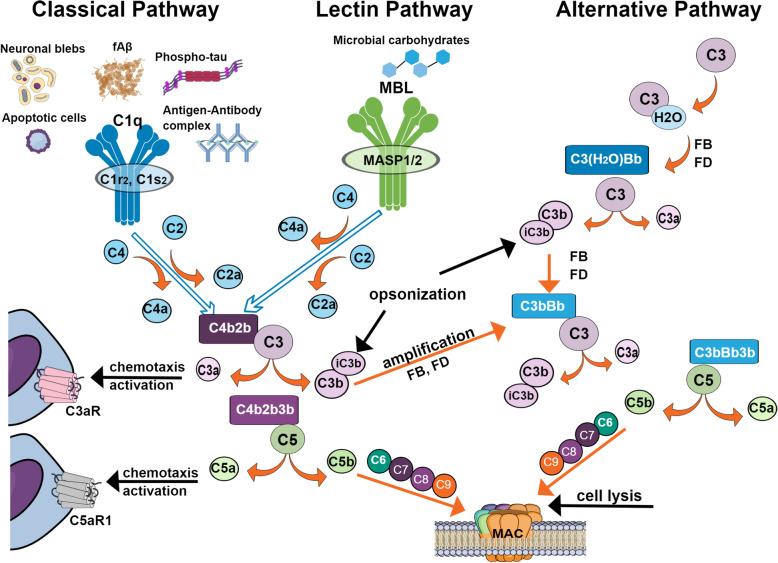Fig. 1.
Activation pathways of the complement system. The complement system is activated by the classical, lectin, or alternative pathways. The classical pathway is activated when the C1 complex composed of C1q, C1r2, and C1s2, binds to apoptotic cells, neuronal blebs, fibrillar amyloid beta (fAβ), hyperphosphorylated tau, or antigen-antibody complexes via C1q. The lectin pathway is activated when mannan-binding lectin (MBL) in complex with MASP1/2 binds to microbial carbohydrates. Both pathways create the C3 convertase by cleaving C4 and C2 to form C4b2b. C3 is cleaved to form C3a, which promotes chemotaxis and activation of microglia via C3aR, and C3b can be cleaved to iC3b (by co-factors and factor I, not shown) to promote opsonization, or bind to C4b2b to form the C5 convertase (C4b2b3b). C5 is cleaved to form C5a, a potent inflammatory effector that acts through C5aR1 to promote chemotaxis and glial activation, and C5b, which binds to C6, C7, C8, and C9 to form the membrane attack complex (MAC) to permeate cell membrane and promote lysis. The alternative pathway can be activated when spontaneous hydrolysis of C3 to C3-H2O enables factors B and D to generate the C3 convertase (C3(H2O)Bb), which then cleaves other C3 molecules to C3b. The alternative pathway also forms an amplification loop for the other complement pathways, when factor B binds to C3b and is cleaved by factor D to form C3bBb which continues to cleave C3 to enhance the effect of activation. This also enables the C3bBb3b, alternative pathway C5 convertase, to cleave C5, releasing C5a and leading to the formation of the MAC

